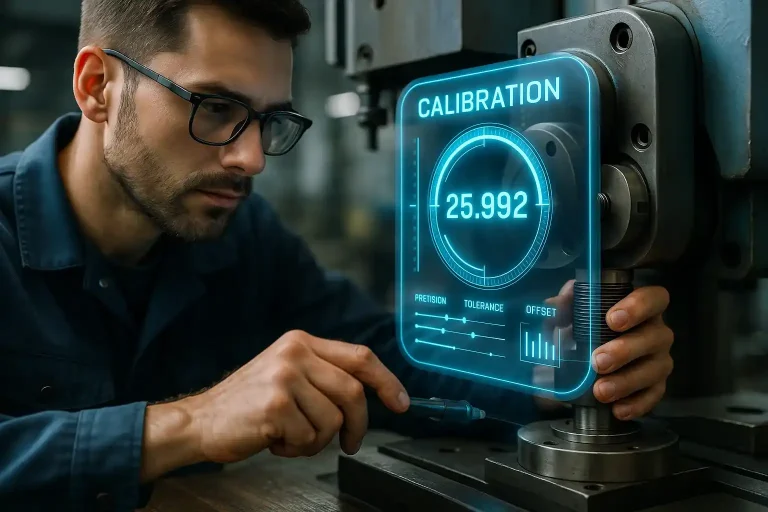Calibration, or kalibraatio in Finnish, is a process that ensures tools, instruments, and machines provide accurate measurements. Whether in scientific research, healthcare, engineering, or everyday household use, the accuracy of instruments is vital. Without proper kalibraatio, even the most advanced devices can deliver unreliable results, leading to errors, safety concerns, and financial losses.
This article explores the meaning of kalibraatio, its significance across different fields, methods of carrying it out, and why it is essential in modern industries.
What is Kalibraatio?
Kalibraatio refers to the comparison of a measuring instrument against a standard reference to verify its accuracy. For example, a thermometer is calibrated against a known temperature to confirm whether its readings are correct. The main goal is to minimize measurement errors and maintain consistency.
Unlike simple adjustments, calibration provides traceability, meaning the measurement can be connected to recognized international standards. This ensures reliability and credibility in results.
Why Kalibraatio is Important
Accuracy in Measurements
The primary purpose of kalibraatio is accuracy. In sectors like medicine, aviation, and construction, even a small deviation can have serious consequences. A medical device that measures blood pressure incorrectly could affect diagnosis and treatment.
Safety Considerations
Incorrect measurements can compromise safety. For example, in aviation, calibrated instruments ensure correct readings of fuel, altitude, and pressure, reducing the risk of accidents.
Cost Efficiency
Errors from uncalibrated instruments can cause production defects or material waste. Regular kalibraatio helps industries save costs by minimizing these risks.
Compliance with Standards
Industries often must follow strict regulations. Routine kalibraatio helps organizations comply with ISO, FDA, or other international standards, preventing legal and financial issues.
Methods of Kalibraatio
Direct Comparison
This involves comparing the device with a standard reference under controlled conditions. For instance, weighing scales are tested against known standard weights.
Signal Simulation
Electronic devices, such as sensors, can be calibrated using simulated signals from a reference generator to check their accuracy.
Automated Kalibraatio Systems
Modern industries use automated calibration equipment for high precision. These systems reduce human error and allow mass calibration in less time.
Field Calibration
For portable or outdoor instruments, kalibraatio can be done on-site, ensuring the device performs well in real working conditions.
Applications of Kalibraatio in Different Industries
Healthcare and Medicine
Medical instruments such as blood glucose monitors, X-ray machines, and infusion pumps must undergo regular kalibraatio. Inaccurate readings can lead to misdiagnosis or harmful treatments.
Manufacturing and Engineering
Production lines rely on precise measurements. From machine tools to robotic systems, calibration ensures quality and efficiency. Without it, products may not meet required specifications.
Environmental Monitoring
Devices that measure air quality, water pollution, or radiation must be reliable. Regular kalibraatio guarantees accurate data collection, which is critical for policymaking and environmental protection.
Aviation and Transportation
Aircraft rely on highly accurate instruments. Altimeters, speed indicators, and navigation systems undergo frequent kalibraatio to ensure passenger safety.
Everyday Applications
Even household devices, like kitchen scales, thermometers, and pressure gauges, benefit from proper calibration to give correct readings.
Challenges in Kalibraatio
Environmental Factors
Temperature, humidity, and vibrations can affect calibration results. Maintaining controlled conditions is essential for accuracy.
Cost and Time
Regular calibration can be costly and time-consuming, especially in industries with hundreds of instruments. However, the long-term benefits outweigh the investment.
Skill Requirements
Calibration requires expertise. Not every technician is trained in handling sensitive instruments, making professional services necessary.
The Future of Kalibraatio
With advances in technology, kalibraatio is becoming smarter and more automated. Artificial intelligence and IoT-enabled devices allow real-time calibration and predictive maintenance. This reduces downtime and ensures continuous accuracy.
Digital twins—virtual models of physical instruments—are also transforming calibration processes. They allow simulation and monitoring without interrupting real operations.
Best Practices for Effective Kalibraatio
-
Schedule Regular Calibration – Set a timetable based on industry standards and manufacturer recommendations.
-
Maintain Records – Keep detailed reports of calibration for compliance and traceability.
-
Use Certified Standards – Always compare instruments with internationally recognized references.
-
Train Staff – Ensure technicians handling kalibraatio are properly trained and skilled.
-
Invest in Automation – Use automated systems where possible to improve efficiency.
Conclusion
Kalibraatio is more than a technical process—it is a foundation of trust, accuracy, and safety in every industry. From ensuring reliable medical diagnoses to guaranteeing the safety of flights, calibration plays a vital role. As technology advances, the future of kalibraatio will bring even greater precision and efficiency, ensuring industries and individuals continue to benefit from accurate measurements.
Calibration, or kalibraatio in Finnish, is a process that ensures tools, instruments, and machines provide accurate measurements. Whether in scientific research, healthcare, engineering, or everyday household use, the accuracy of instruments is vital. Without proper kalibraatio, even the most advanced devices can deliver unreliable results, leading to errors, safety concerns, and financial losses.







